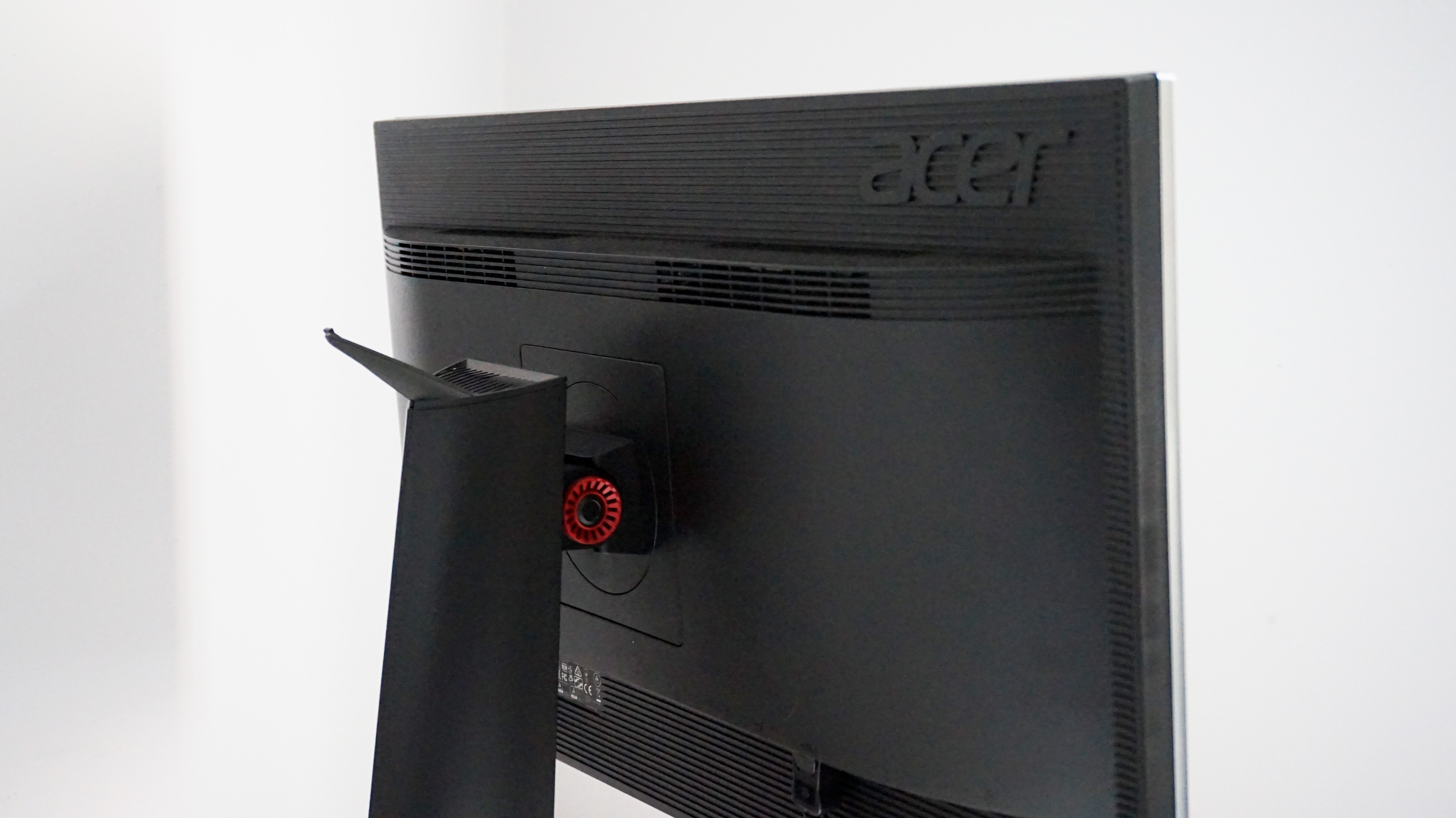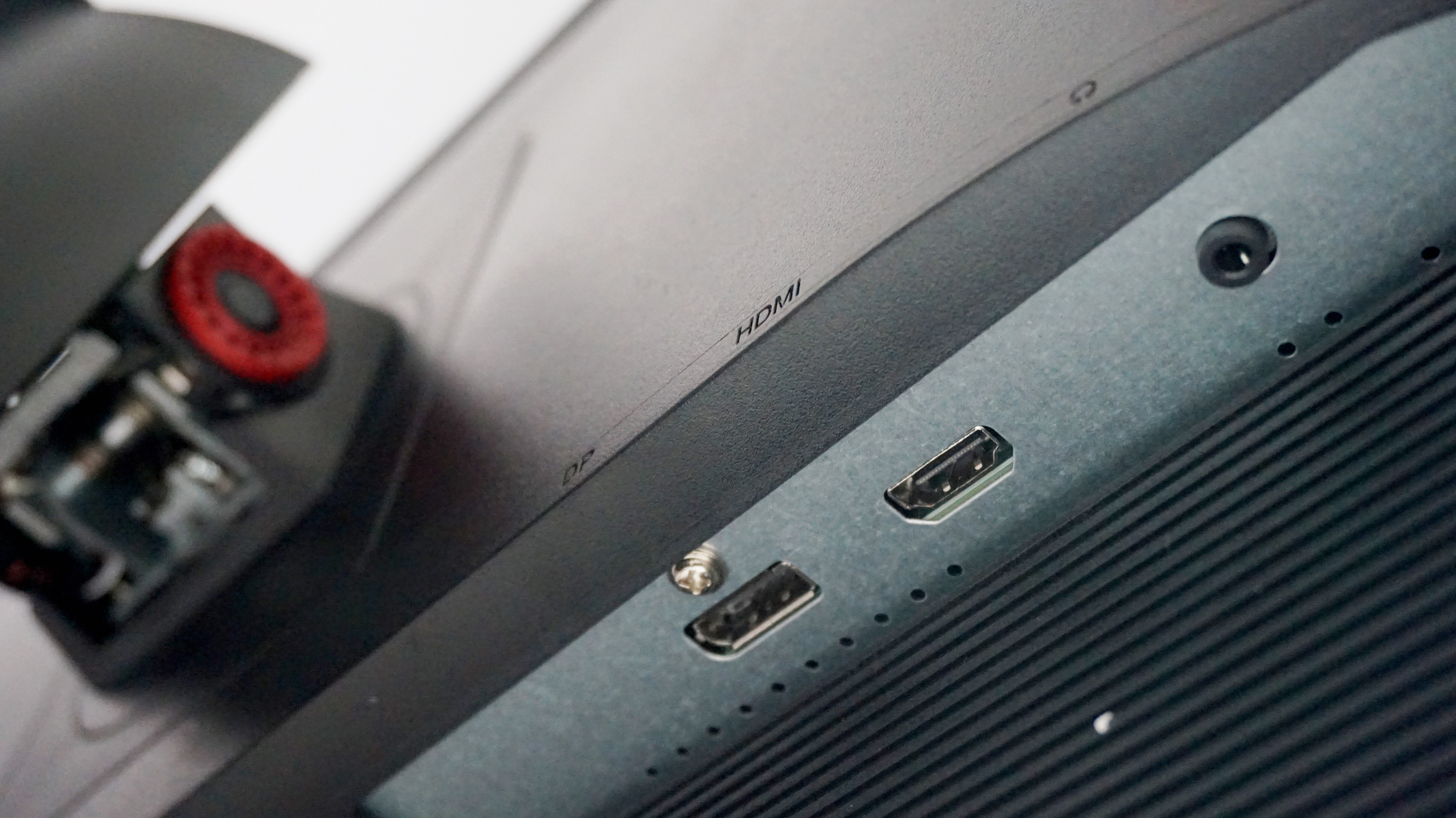After testing what looks as if 387,001 monitors with AMD FreeSync help, I’ve lastly acquired one other honest-to-goodness Nvidia G-Sync one on my desk at this time, the Acer Predator XB241H – and boy, it’s a great ‘un. Part of Acer’s XB1 vary, this explicit incarnation is the 24in, 1920×1080, TN model. It additionally comes as a 24in, 2560×1440 jobber and a number of other completely different permutations with 27in, 28in and 32in display sizes, however the principle attraction of this explicit string of letters and numbers is its beautiful 144Hz refresh price that may be overclocked up to an enormous 180Hz for ultra-high body price gaming.
Admittedly, each mannequin besides the 4K XB1s can hit at the least 144Hz, so that you’re not precisely shedding out on a lot within the body price division when you’d reasonably choose for a bigger display measurement or a better decision. However, if getting the quickest body price doable is necessary to you, it’s price noting that the perfect overclocked setting you’ll get at 1080p on the XB1’s bigger 27in panel is 170Hz, and simply 165Hz throughout its 1440p choices.
Personally, I don’t suppose an additional 10-15 frames is de facto going to make that a lot of a distinction, however the XB241H nonetheless has a lot to advocate it beside its ludicrous body price potentialities. For starters, it’s not hideously costly so far as Nvidia G-Sync displays are inclined to go lately, demanding round £380 within the UK and $395 within the US, and its TN panel is surprisingly first rate for the cash.
Before I leap into specifics, nonetheless, a small (okay, giant) phrase about what Nvidia G-Sync truly means. In a nutshell, that is Nvidia’s adaptive body price expertise, which robotically adjusts the refresh price of the monitor to match the variety of frames being pumped out by your graphics card. This is supposed to assist get rid of display tearing when it’s chucking out too many frames for the display to deal with, and also will assist do away with any undesirable stutter throughout small efficiency hiccups, resulting in smoother, extra fluid recreation enjoying.
There are a number of additional bonuses that include Nvidia G-Sync panels as nicely. These embody Ultra Low Motion Blur, which helps maintain issues trying good and sharp (particularly at increased refresh charges, the place you may typically see a little bit of a hazy path if a monitor has notably sluggish response instances) and low enter lag over DisplayPort. But the principle factor is that dynamic refresh price adjustment.
You’re additionally prone to begin seeing extra G-Sync HDR displays arrive over the approaching months as nicely (simply to make issues additional complicated), which include the entire bits of tech talked about above in addition to extensive color gamut and excessive dynamic vary help. The XB241H isn’t one in every of these – it simply has common G-Sync – however you may learn extra about what HDR is and what G-Sync HDR monitors are all about by hitting these good pink hyperlinks.
It’s additionally price mentioning that G-Sync is a licensed, proprietary commonplace, and that each G-Sync panel has been pre-approved by Nvidia upfront, guaranteeing you get the identical stage of G-Sync expertise it doesn’t matter what monitor you find yourself shopping for. This normally provides fairly the value premium onto your typical G-Sync monitor, making them far more costly than their FreeSync counterparts. This is as a result of FreeSync is an open commonplace, thereby making it considerably cheaper to implement. The draw back is that you may’t assure each FreeSync monitor will ship the identical sort of high quality, as typically its variable body price tech will solely kick in inside sure body price ranges, for instance, with some being so much wider and extra beneficiant than others.
Needless to say, G-Sync solely works with Nvidia graphics playing cards, whereas FreeSync is supposed for AMD graphics playing cards. As such, the deserves of 1 over the opposite could be a fairly moot level relying on what sort of graphics card you could have, however it’s price taking into account when you’re serious about upgrading quickly or need to be taught how to build a new PC from scratch.
So, now that we’ve acquired the G-Sync stuff out of the best way, how about that TN panel? Well, I’m happy to report the XB241H is de facto fairly good. TN panels are sometimes identified for his or her quick response instances, not their color accuracy. The latter tends to be a bit garbage in comparison with fancier IPS screens, however my X-Rite i1 Display Pro calibrator confirmed that the XB241H can already present round 95% of the usual sRGB color gamut straight out of the field. That’s utilizing the monitor’s default User profile, however I acquired the identical outcomes once I switched to Standard as nicely.
There are three different modes you may select from right here, together with a dimmer Eco setting, a really sharp and barely horrid-looking Graphics possibility, and a mildly oversaturated Movie mode, however I caught with User for almost all of my testing.
What’s extra, I solely needed to make a few changes to the monitor’s color temperature settings (choosing the User possibility and reining within the inexperienced worth a bit) to push that sRGB determine a bit increased to an much more respectable 97.5%. That’s fairly nice so far as sub-£400 / $400 TN displays go, and infinitely higher than the equally G-Sync and 144Hz / 180Hz refresh rate-equipped Asus ROG Swift PG248Q.
Admittedly, the Predator XB241H isn’t fairly as brilliant because the ROG PG248Q, hitting a peak brightness of round 385cd/m2 based on my measurements in comparison with the ROG’s 500cd/m2, however that’s nonetheless greater than sufficient for taking part in video games if you’ve acquired blazing beams of daylight coming in via a close-by window. Trust me, I’ve tried it.
A slightly decrease brightness stage additionally means the XB241H has decrease black ranges (0.34cd/m2 vs 0.43cd/m2, the nearer to 0.00cd/m2, the higher) and a better distinction ratio (a really pleasing 1117:1 vs a reasonably extra middling 949:1), leading to better-looking video games with extra element in them.
Of course, one of many downsides of TN panels is that, usually, their viewing angles aren’t as extensive as IPS. Thankfully, this isn’t a lot of an issue on the XB241H, as its height-adjustable stand makes it tremendous simple to get it into a great place. Yes, there’s a little bit of color shift on the fringe of the display if you have a look at it from the aspect, however actually, who performs video games with out having their monitor immediately in entrance of them? Plus, you additionally get a number of swivel, tilt and rotation adjustment thrown in as nicely, so you may even use the monitor in portrait mode if you wish to.
The solely factor the XB241H actually suffers from is a scarcity of ports. Just one HDMI, one DisplayPort and a mixed headphone and microphone jack are all you get right here, and that’s your lot. No USB hub, no additional HDMI. Nothing. To be honest, it will in all probability be superb normally (simply bear in mind to make use of the DisplayPort for these beautiful excessive refresh charges), however hey, it’s all the time good to have choices, proper?
Still, so long as you don’t thoughts the marginally ‘gamer’ look of the entire thing (what with these pink pronged toes, headset hook around the again and basic boxiness of its bezels), the Acer Predator XB241H is a superb monitor certainly, and definitely one of many best gaming monitors I’ve seen at this type of worth vary.
At £380 / $395, the XB241H can be one of many higher selections I’ve seen for these after a G-Sync display on a (relative) funds, too – at the least in comparison with bigger G-Sync screens just like the Acer Predator Z35p and AOC Agon AG352UCG. The Asus ROG Swift PG248Q is, admittedly, fairly a bit cheaper in the US, however I nonetheless suppose I’d reasonably pay the additional $80 or so for the XB241H’s superior panel. The XB241H is unquestionably the best way to go within the UK (right here, the PG248Q prices £420), and it additionally doesn’t include any distracting LED lights both. If you’re after a high quality 1920×1080 gaming monitor, the Acer Predator XB241H is a troublesome act to beat.







